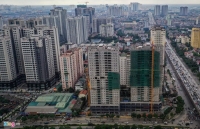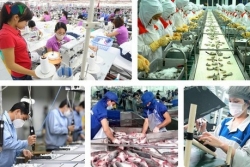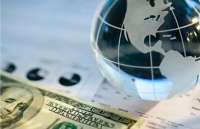
Vietnam likely to benefit from US$6 trillion wave of Foreign Indirect Investment
Latest
| TIN LIÊN QUAN | |
| Vietnam’s economy attractive to foreign investment: International media | |
| HCM City gets ready for new foreign investment wave post-COVID-19 | |
 |
| Vietnam expects to attract a large amount of foreign indirect investment capital through the stock market in the post-COVID-19 period. |
There is no doubt that foreign direct investment has been an important contributor to the Vietnamese economy over the years. However, foreign indirect investment (FII) through the stock market has also proven to be a driving force behind much of the country’s economic growth, especially in the context of the COVID-19 pandemic.
A boost for the stock market
A successful example of FII at work is the recent acquisition of the Saigon Beer-Alcohol-Beverage Corporation (Sabeco) by a Thai billionaire. The tycoon spent close to US$5 billion on purchasing shares in Sabeco in order to become the firm’s largest shareholder, leading to a fairly effective restructuring of the enterprise and a positive impact on various sectors of the economy.
According to Andy Ho, Managing Director and Chief Investment Officer of VinaCapital, the country has plenty of opportunities to attract capital flows indirectly, particularly as developed economies are expected to invest up to US$6 trillion into the stock markets of emerging and marginal economies in the post-COVID-19 period.
Most notably, Vietnam is proving to be the main focus of financiers as the Vietnamese market is believed to provide greater returns than investing in their own countries. This is due to bonds in developed markets enduring negative interest rates, in addition to term deposit rates being below zero, and dividend interests between 1% and 2%, lower than in Vietnam.

| Ha Noi boosts public investment disbursement |
Andy Ho recalled that after the previous significant global financial crisis took place in 2008, a large amount of money was injected into the global stock market. Since then, the price of stocks from the United States had increased by five times, while corporate profits have only increased twice during the same period.
This demonstrates to show how cash flow can enjoy a greater impact on stocks, with the VN-Index also increasing by 50% in 2017, according to the VinaCapital CEO.
He explained one major factor is that the European Central Bank injected US$1 trillion into their economy, with half of the sum flowing into emerging stock markets, including Vietnam.
In fact, the recent flow of foreign cash has negatively affected the country’s stock market with foreigners increasing their net selling during the first three months of the year when the COVID-19 pandemic was said to have reached its peak. However, according to Bloomberg, the Vietnamese stock market has picked up by 31% since the end of March, largely thanks to the country’s effective epidemic control efforts. It has therefore outperformed other markets in Asia, with the VN-Index occasionally exceeding the 900-point benchmark.
FII attraction methods
Experts believe that in order to make the most of the upcoming wave of FII, Vietnam should seek to attract the flow and support the stock market while developing the capital market, therefore allowing local firms to easily access resources for technology innovation investment. Over the long run, this will help them to increase their competitiveness in terms of the international market.
Financial expert Nguyen Tri Hieu noted that foreign investors have been fascinated for years by the attractiveness of the growth prospects that exist in the country. Indeed, a large amount of indirect foreign capital has failed to be put into the Vietnamese market because of the lack of large-scale companies that operate efficiently, especially among those that have achieved high growth rates.
| Read more |
 Pathway for local businesses to benefit from EVFTA and EVIPA Pathway for local businesses to benefit from EVFTA and EVIPA |
The problem, according to the expert, will be resolved providing that the State moves to accelerate the divestment process from state-owned companies that enjoy great growth potential in such fields as telecommunications, electricity, or health.
“Although many State-owned companies have been equitized, very few shares have been traded in the market, while foreign investors prefer to buy large volumes of shares that have high liquidity. This can partly cause investors to hesitate to pour capital into Vietnam,” Hieu outlined.
Moreover, Ho suggested that in order to attract a greater flow of foreign indirect capital, Vietnam should swiftly trim the corporate income tax over the coming two years, continue to reduce interest rates on capital mobilization in banks and increase the percentage of shares that foreign investors are permitted to own in listed companies.

| US firms eye stronger investment cooperation in Vietnam A 40-strong business delegation from the US will launch an investment promotion programme in Vietnam from March 3-6, aiming to expand trade and investment cooperation ... |

| Agro processing gets tidal wave of investment Vietnamese businesses have been investing heavily in the agro-processing sector in recent years, helping it develop sustainably and effectively adapt to natural disasters and diseases. |

| Foreign investment inflows post triple-digit growth in January Foreign investment inflows posted triple-digit growth (179.5%) to US$ 5.3 billion in January, the General Statistics Office (GSO). |

















